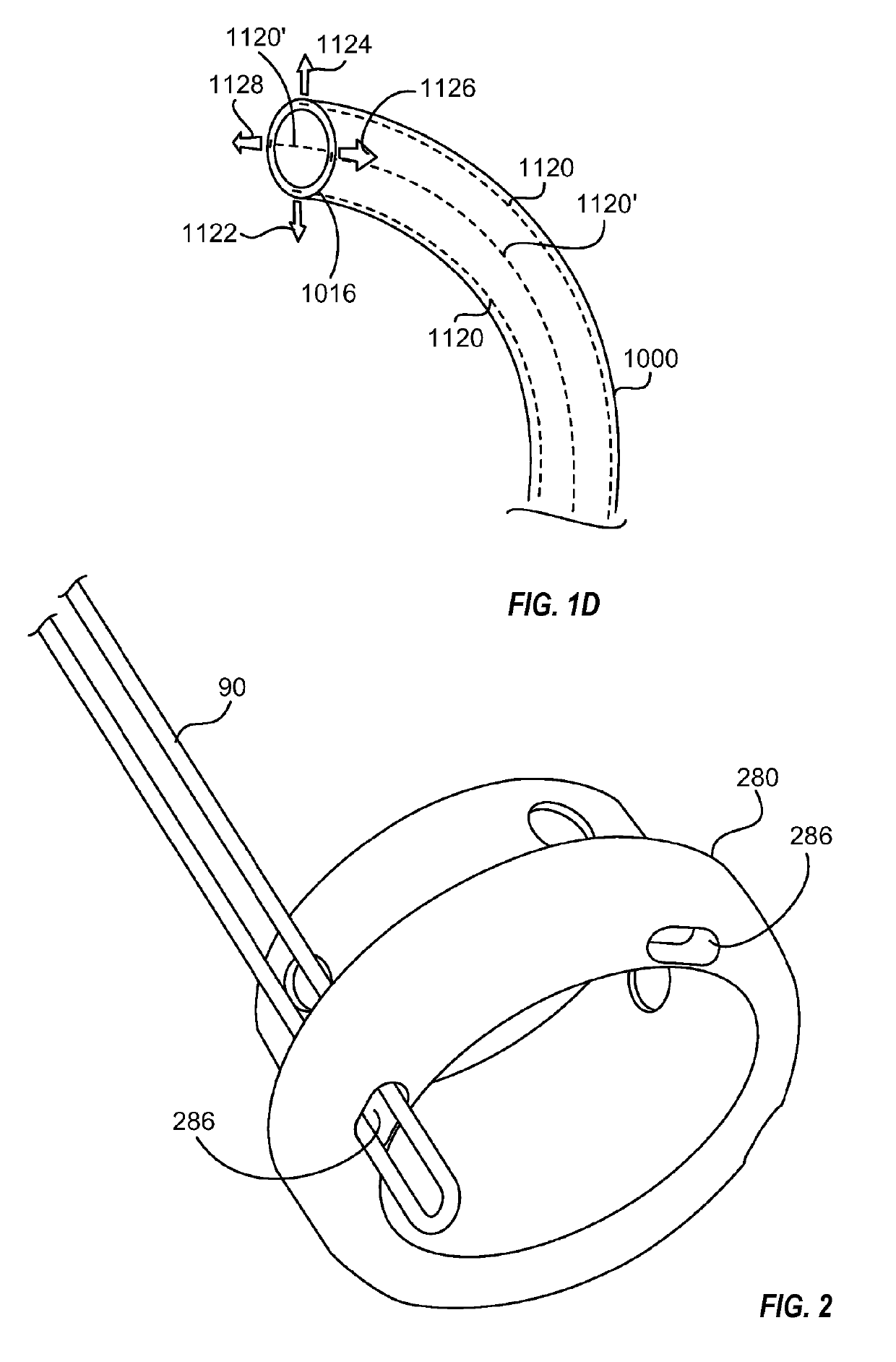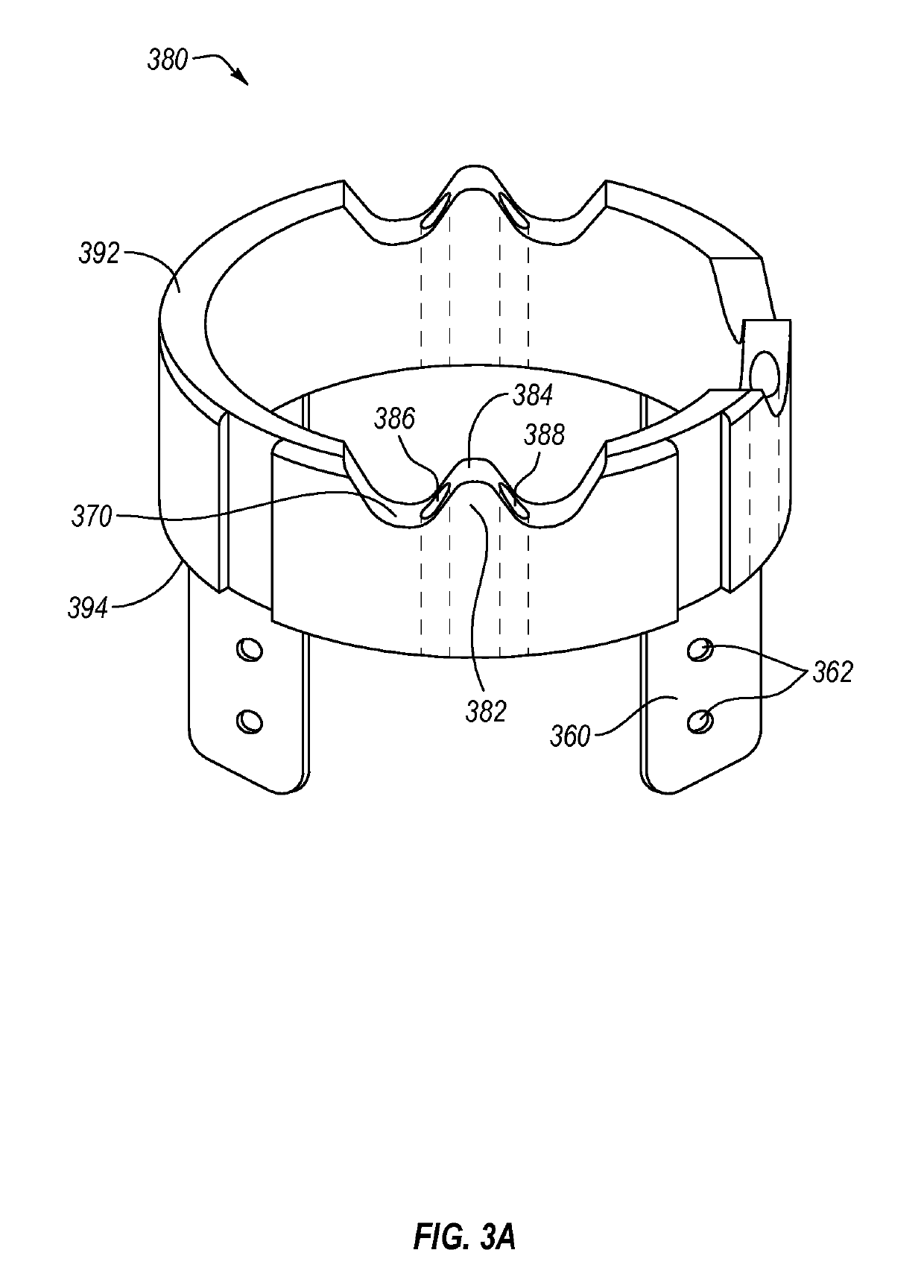Catheter guiding system and methods
a guiding system and catheter technology, applied in the field of guiding systems, can solve the problems of increasing the time and cost of the procedure, increasing the risk of misalignment, increasing the cost of the overall procedure, and manipulating, so as to reduce the stress placed, the effect of spreading the stress
- Summary
- Abstract
- Description
- Claims
- Application Information
AI Technical Summary
Benefits of technology
Problems solved by technology
Method used
Image
Examples
Embodiment Construction
[0030]FIGS. 1A-1D illustrate embodiments of steerable guide catheters. To provide a higher degree of control and variety of possible curvatures, steering mechanisms may be used to create the curvatures and / or to position the catheters. In some embodiments, the steering mechanisms comprise cables or pullwires within the wall of the catheter. As shown in FIG. 1A, the guide catheter 1000 may include a pullwire 1120 slidably disposed in lumens within the wall of the catheter 1000 extending to the distal end 1016. By applying tension to the pullwire 1120 in the proximal direction, the distal end 1016 curves in the direction of the pullwire 1120 as illustrated by arrow 1122.
[0031]Likewise, as shown in FIG. 1B, placement of the pullwire 1120 along the opposite side of the catheter 1000 will allow the distal end 1016 to curve in the opposite direction, as illustrated by arrow 1124, when tension is applied to the pullwire 1120. Thus, referring to FIG. 1C, diametrica...
PUM
 Login to View More
Login to View More Abstract
Description
Claims
Application Information
 Login to View More
Login to View More - R&D
- Intellectual Property
- Life Sciences
- Materials
- Tech Scout
- Unparalleled Data Quality
- Higher Quality Content
- 60% Fewer Hallucinations
Browse by: Latest US Patents, China's latest patents, Technical Efficacy Thesaurus, Application Domain, Technology Topic, Popular Technical Reports.
© 2025 PatSnap. All rights reserved.Legal|Privacy policy|Modern Slavery Act Transparency Statement|Sitemap|About US| Contact US: help@patsnap.com



